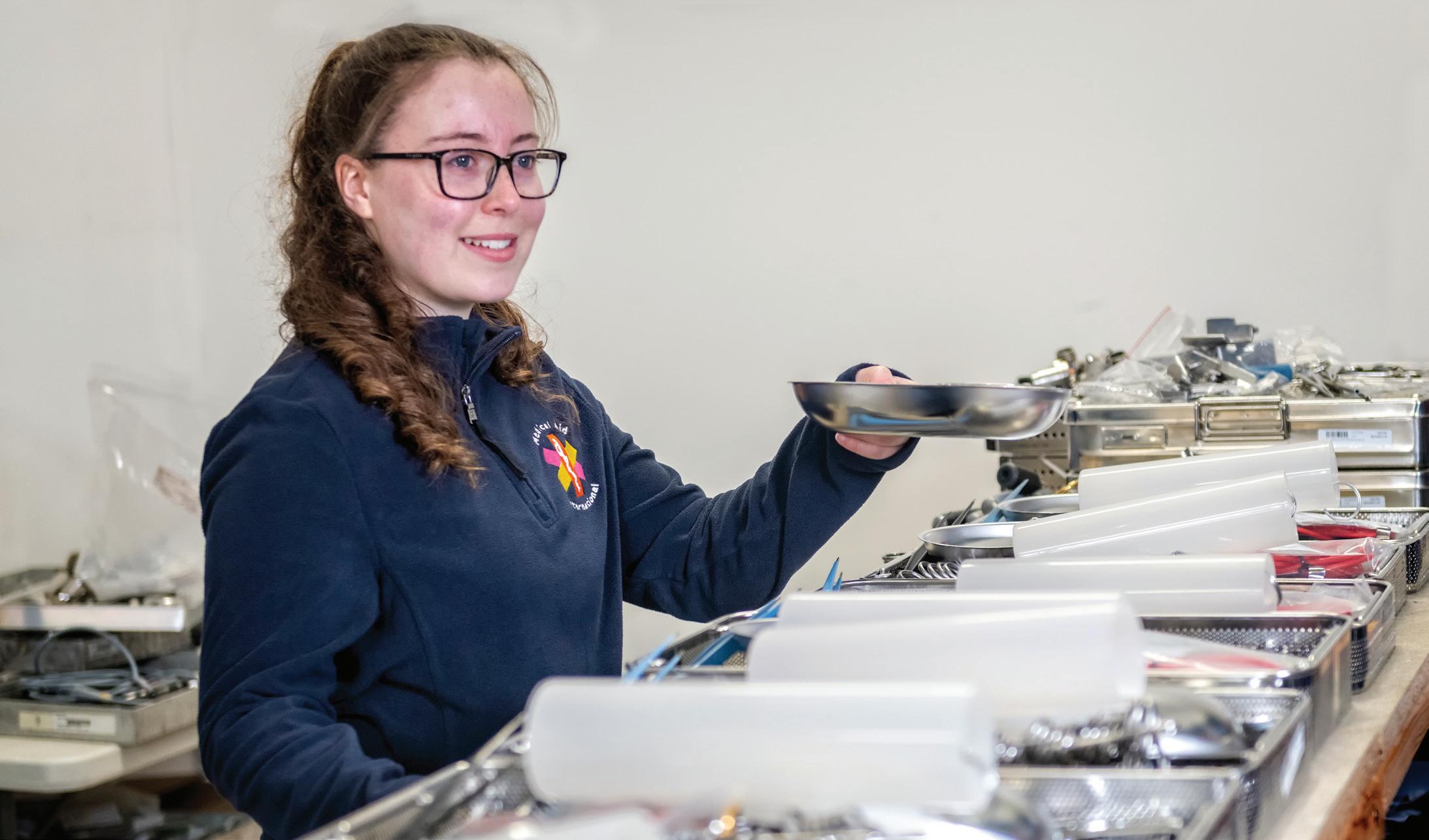
2 minute read
How We Work: Advice, Preparation, Project Management
Amy sorting instruments for Leyaata Hospital for Ghana Rural Integrated Development (GRID)
At Medical Aid International, we pride ourselves not only on supplying equipment, training, and expertise specifically targeted to LMIC regions’ needs, but on our ability to advise partners of the practical challenges and limitations of deploying and managing aid projects in these regions – and how to prepare for and project-manage them. Below is some advice to help you in your projects.
Advertisement
• Involve, don’t impose – Listening to end-users and other stakeholders is critical, to ensure that what is being delivered will truly work for their needs and in their environment, today and tomorrow.
• Assess needs – A detailed and accurate assessment of the receiving institution’s clinical needs is critical, as each institution will vary. From this, a realistic list of appropriate equipment can be decided, and accurate costings calculated.
At all times, our advice echoes our own approaches and attitude – namely, that we should be doing right by these environments, not just doing good there.

• Assess infrastructure – Availability of electricity, gas, oxygen, and the state of the buildings all influence the balance between needs and potential solutions.
• Look at local support – Understand what the limitations of local skill and support are (nursing, biomedical engineers etc.) and consider investing in these to remedy shortfalls.
• Watch for hidden costs - Some medical devices, whilst being extremely effective require a costly supply of consumables. Budgets often won’t cover this, so alternatives are necessary.
• Choose equipment carefully – A combination of new, ex-demonstration and donated goods enables budgets to be maximised to best effect. All equipment should be checked to ensure it comes with everything needed to make it usable.
• Factor in the maintenance - Provision should be made in budgets for regular maintenance even if that involves bringing in overseas engineers. • Low-tech doesn’t mean low-quality or poor patient care – Crucially, there must be an
acceptance that something that is less than hi-tech may still produce the desired outcome.
• Get started, show results – It is often not realistic to provide all the stakeholders’ desired equipment options, particularly in the initial phases of a project. But it is important to start a unit functioning using the equipment available, since funders can then see evidence of positive outcomes, which can in turn unlock more funds.
• Plan for the future – Set up a training, staffing and maintenance plan to ensure the resources are used effectively for the long-term.









